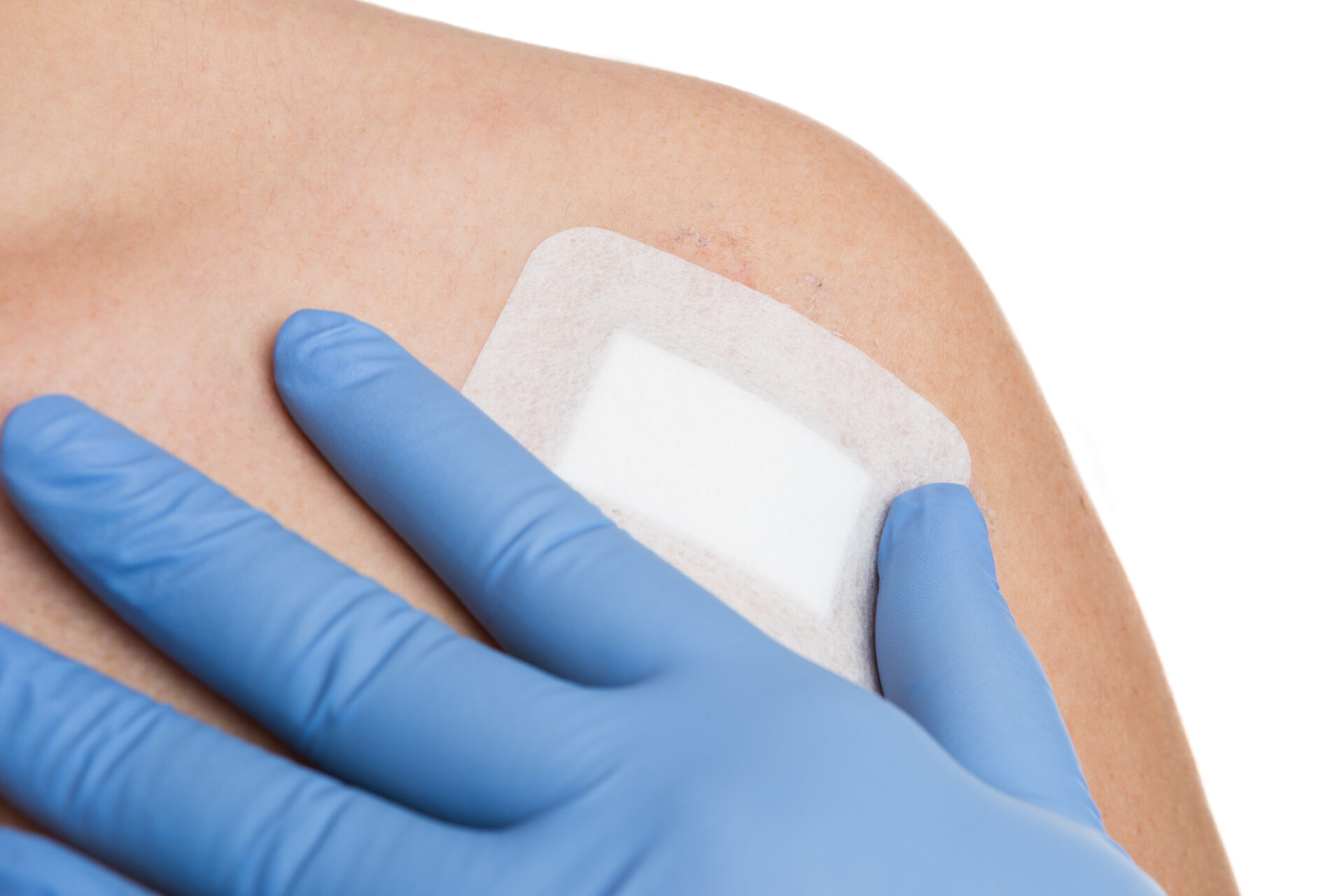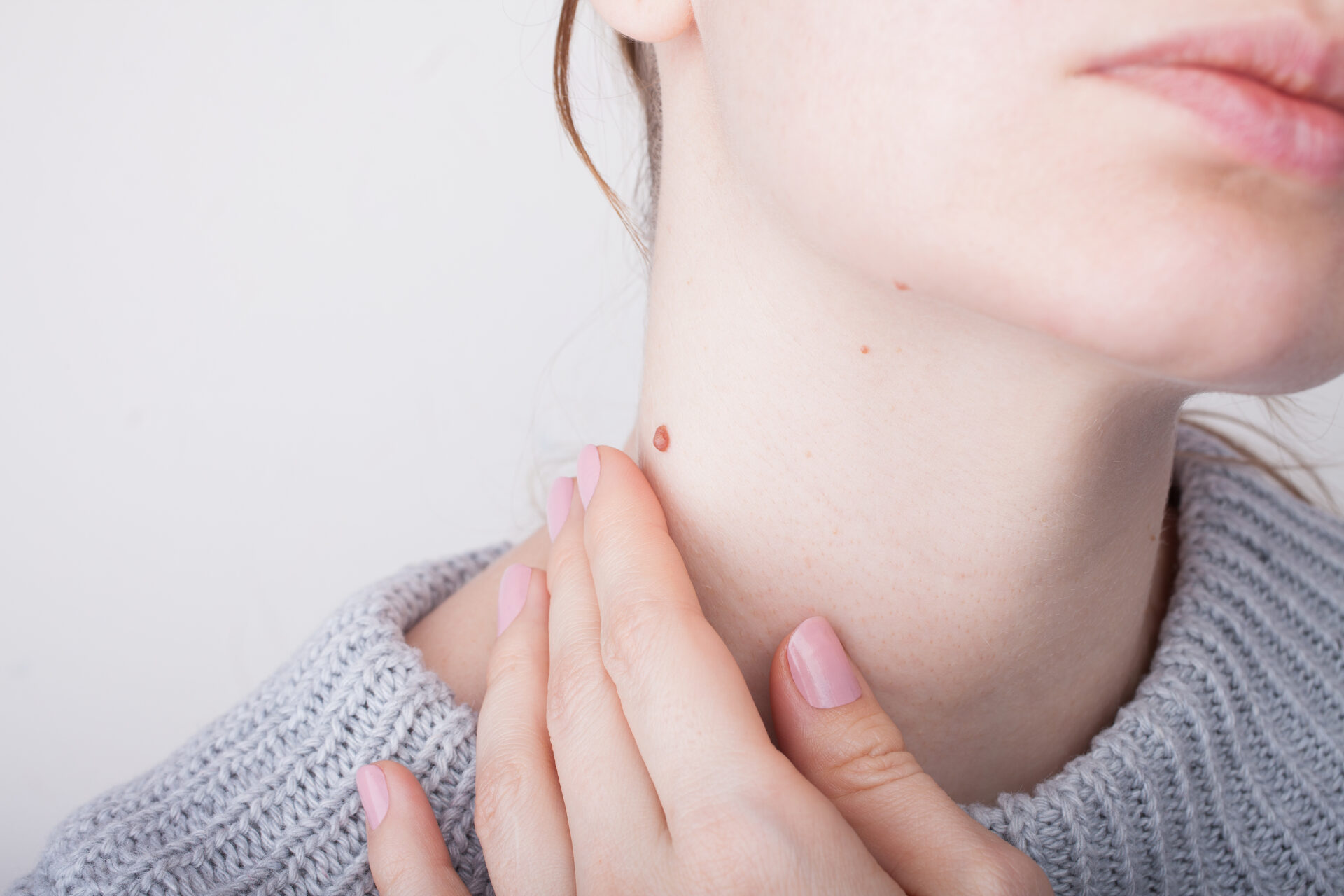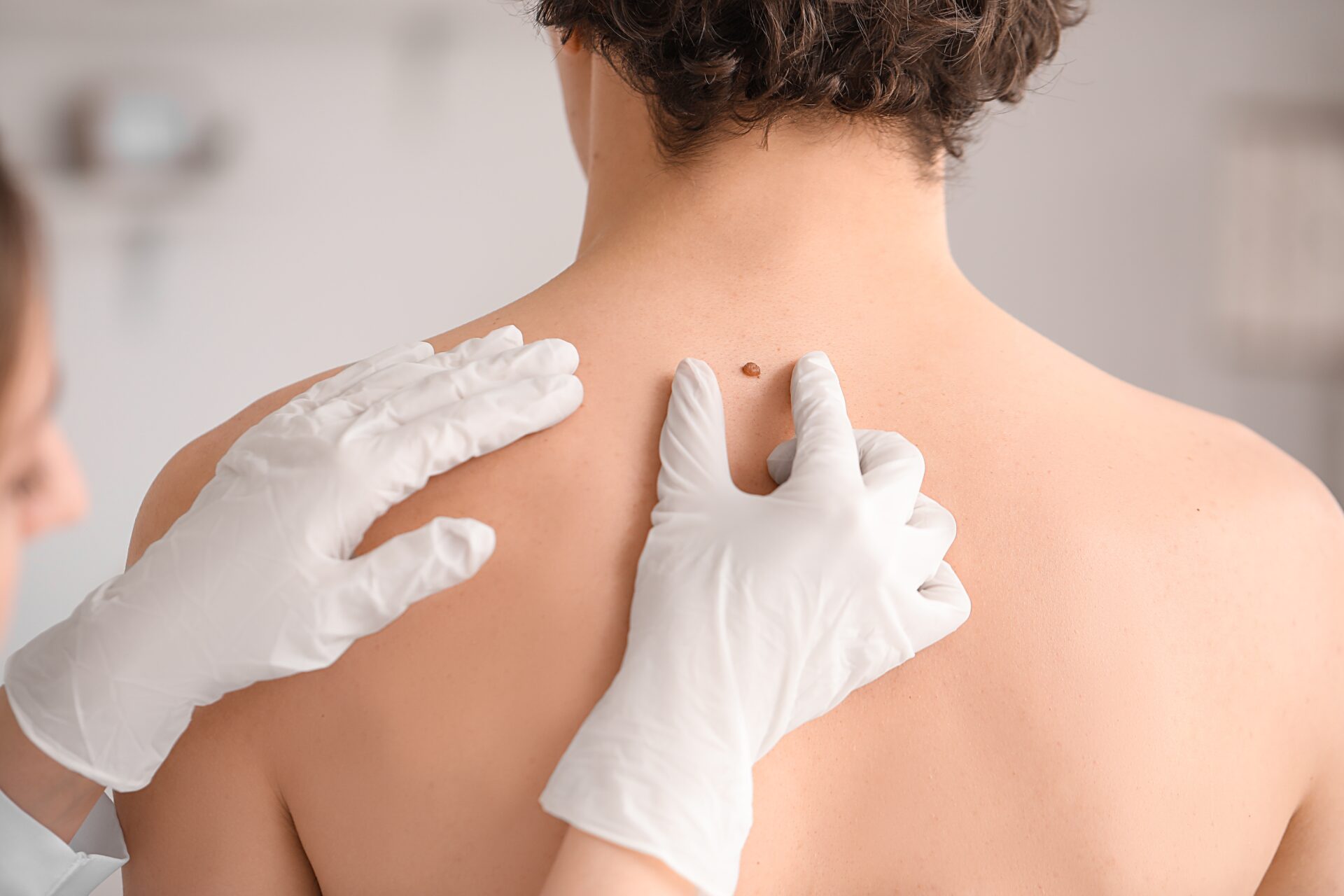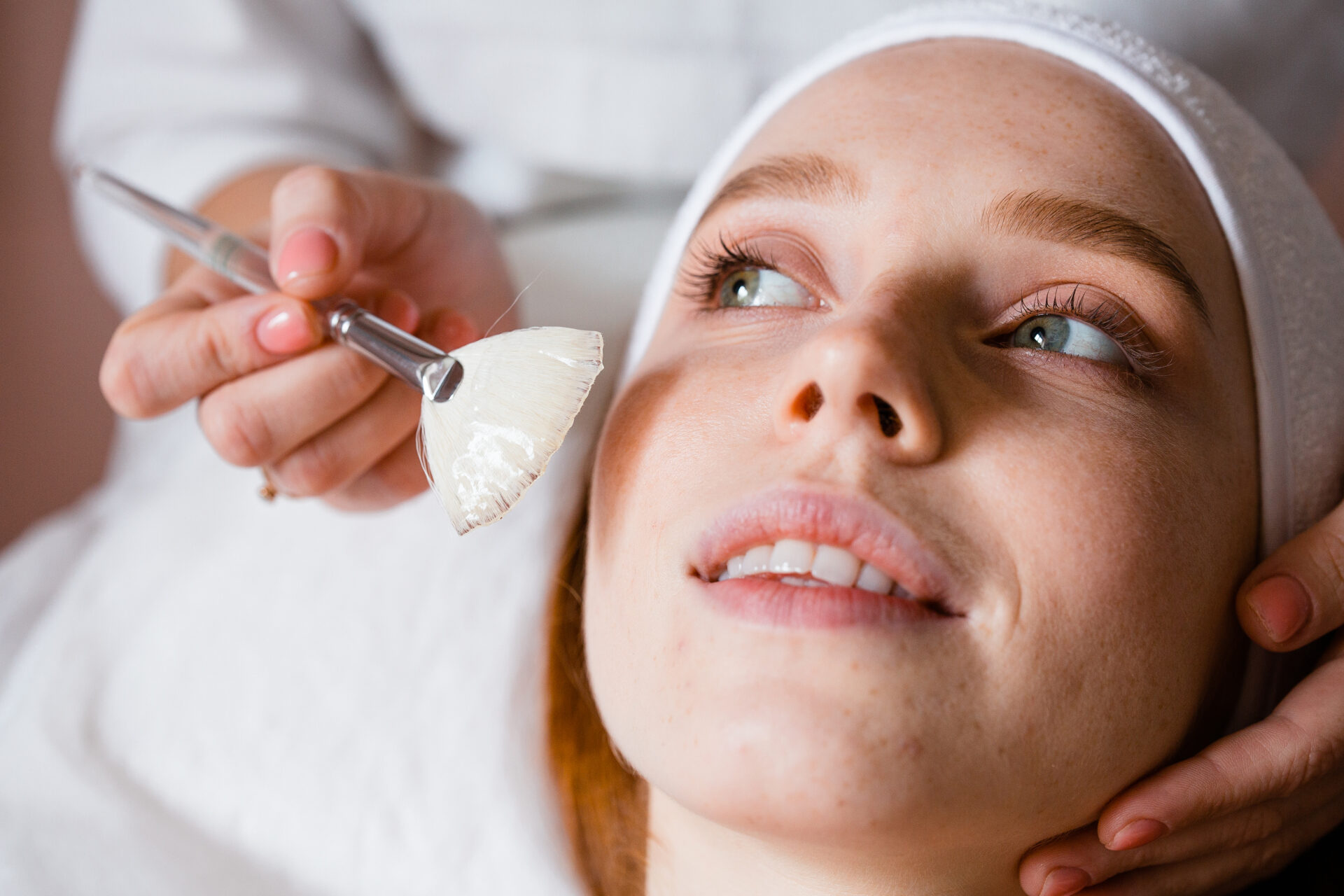Mole removal is a common procedure that removes unwanted or suspicious moles. While it is typically a simple and safe outpatient procedure, proper aftercare is crucial for optimal healing and minimizing the risk of complications.
Keep reading to learn more about how to properly care for your skin after mole removal!
What to Expect After Mole Removal
The immediate post-procedure experience can vary depending on the type of mole removal technique used. However, there are some common expectations.
Minor Bleeding: Minor bleeding is common immediately after mole removal. Your provider will apply pressure to stop any bleeding and provide instructions for managing it at home.
Swelling and Redness: These are normal inflammatory responses and typically subside within a few days.

Pain: Some discomfort is expected, which can be managed with over-the-counter pain relievers like acetaminophen or ibuprofen.
Blistering: In some cases, a blister may form at the removal site. It’s important to leave blisters intact and allow them to heal naturally.
Daniel Aires, MD, board-certified dermatologist at Golden State Dermatology in Walnut Creek, emphasizes, “Taking proper care of your skin after mole removal is essential for a smooth recovery and a desirable cosmetic outcome. But, it’s also important to choose a provider who will consider the cosmetic outcome of mole removal and use the best procedure for minimal scarring.”
How to Care for Your Skin After Mole Removal
Following your provider’s specific instructions for your individual case is crucial for optimal healing. Here are some general guidelines for recovery after mole removal:
Wound Care
- Keep the treated area clean and dry. Your provider will provide specific instructions on how often to clean the wound and what type of dressing to use, if any.
- Gently cleanse the area with mild soap and water, avoiding scrubbing or excessive pressure.
- Pat the area dry with a clean towel.
- Apply a topical ointment (e.g. Vaseline or white petrolatum) plus a covering (e.g. Band-Aid or non-stick Telfa + paper tape). We typically prefer to keep the wound moist and covered until it has healed. The development of large scabs is to be avoided, as they delay wound healing.
Pain Management
- Over-the-counter pain relievers like acetaminophen or ibuprofen can help manage any discomfort after the procedure.
- Follow the recommended dosage and consult with your provider if you have any concerns.
Sun Protection
- Sun exposure can slow healing and increase the risk of scarring.
- Avoid direct sunlight on the treated area for several weeks or as directed by your provider.
- When outdoors, wear protective clothing, such as hats with wide brims, and use a broad-spectrum sunscreen with SPF 30 or higher on exposed areas.
Moisturizing
- Once the wound has healed, your provider may recommend using a gentle moisturizer to keep the area hydrated and reduce the risk of scarring.
- Choose a fragrance-free and hypoallergenic moisturizer to minimize irritation.
Avoid Picking
- It’s crucial to avoid picking at the scab or wound, as this can increase the risk of infection and scarring.
What Should I Avoid After Mole Removal?
To promote optimal healing and minimize the risk of complications, here are some things to avoid after mole removal.
Hot Tubs: Avoid swimming, hot tubs, and saunas for at least a week, or as directed by your provider, as these can increase the risk of infection.
Makeup: Avoid applying makeup directly to the treated area until the wound has completely healed.
Showering: Avoid getting the area wet in the shower for at least a day or two after removal. Your providerwill tell you exactly how long you will need to avoid getting the area wet.
Alcohol Consumption: Excessive alcohol consumption can delay healing and increase the risk of complications.
Smoking: Smoking will delay healing and increase the risk of complications.
When Should I See My Provider After Mole Removal?
While some discomfort and redness are normal after mole removal, it’s important to be aware of signs that may indicate a complication. Here’s when to contact your provider:
- Excessive bleeding or oozing
- Signs of infection, such as increased redness, swelling, pain, or pus
- Fever
- Severe pain that is not relieved by over-the-counter medication
- Any changes in the appearance of the wound, such as new bumps or discoloration
How Can I Minimize Scarring After Mole Removal?
 While the goal is for mole removal to leave minimal scarring, some degree of scarring is possible after any skin break. If scarring is a concern, speaking with your dermatologist can help you understand your risk.
While the goal is for mole removal to leave minimal scarring, some degree of scarring is possible after any skin break. If scarring is a concern, speaking with your dermatologist can help you understand your risk.
However, there are steps you can take to minimize the appearance of a scar. Make sure to follow aftercare instructions carefully. Proper wound care plays a significant role in reducing scar formation.
Silicone scar gels: Your provider may recommend using silicone scar gels to help flatten and soften scars. These are typically applied after the wound has completely healed.
Sun protection: Consistent sun protection is crucial to prevent scars from darkening and becoming more noticeable.
Laser therapy: In some cases, your provider may recommend laser therapy to help reduce the appearance of scars or redness.
The Importance of Regular Skin Exams
Regular skin exams by a dermatologist are crucial for early detection of skin cancer and other skin conditions. Early detection and treatment can significantly improve outcomes.
It’s recommended to schedule annual skin exams, or more frequently if you have risk factors for skin cancer.
Shareefa Saleh, PA-C, certified physician assistant Golden State Dermatology in Walnut Creek, explains, “Serious skin concerns can develop quickly, so it is imperative to not only get regular skin checks but to also perform regular self-skin exams at home. No one sees your skin more than yourself, so often patients will detect changes in between dermatology appointments.“
Schedule a Consultation Today
If you have a mole that concerns you or are considering mole removal, schedule a consultation with your provider at Duncan Dermatology.
They can assess your individual needs and discuss the best course of action for mole removal and aftercare. With proper care and guidance, you can achieve a successful outcome and healthy, beautiful skin.



